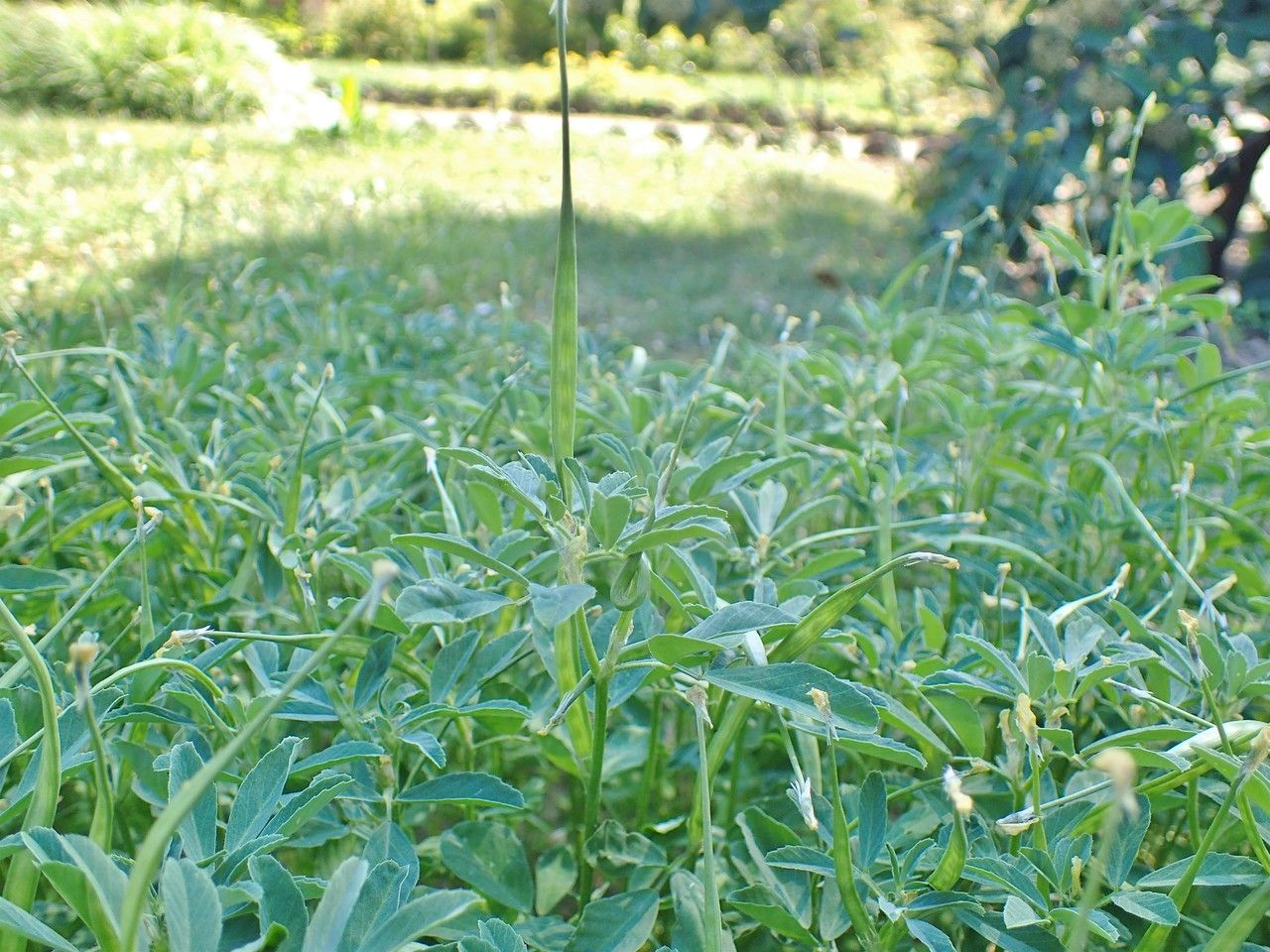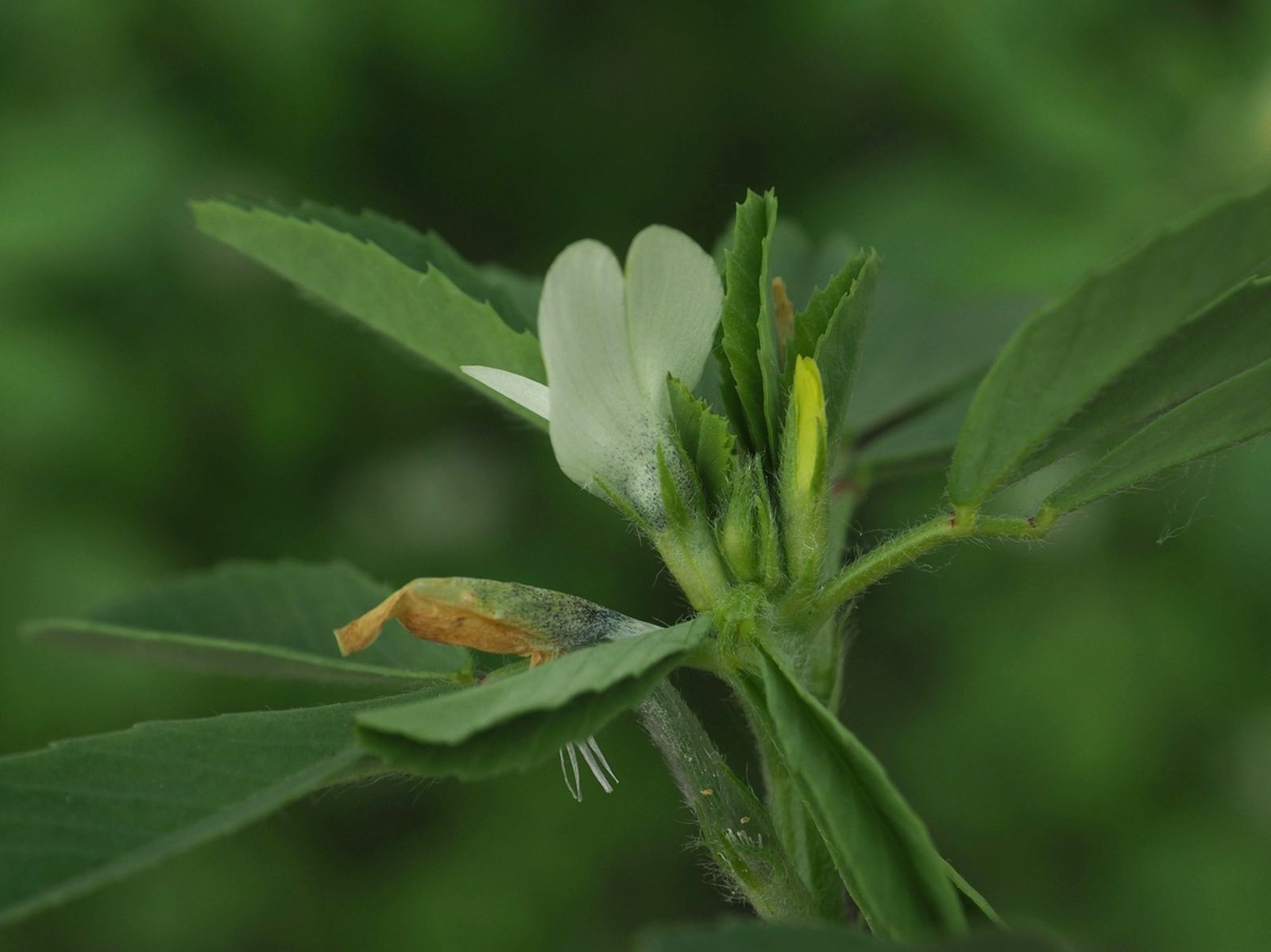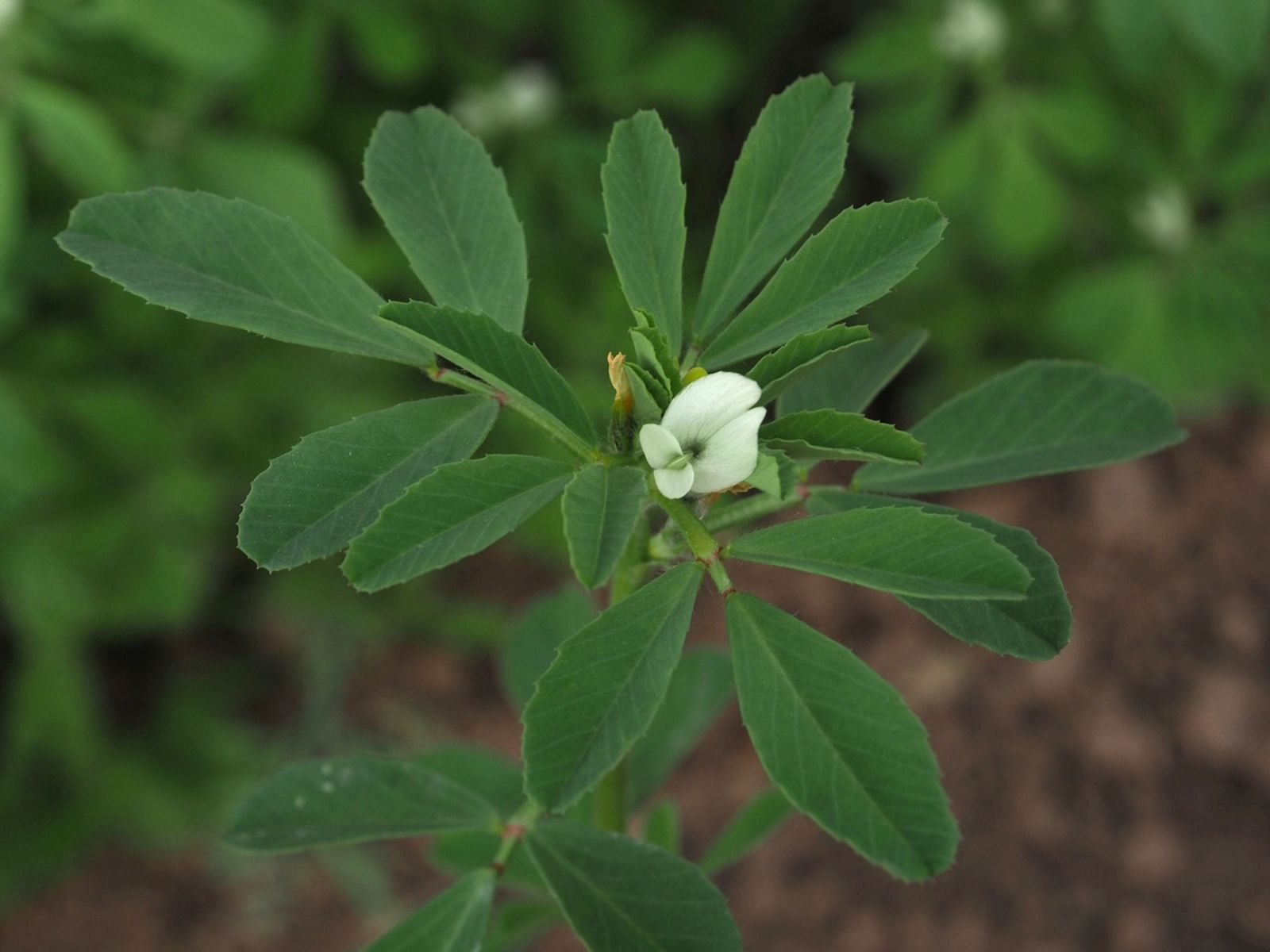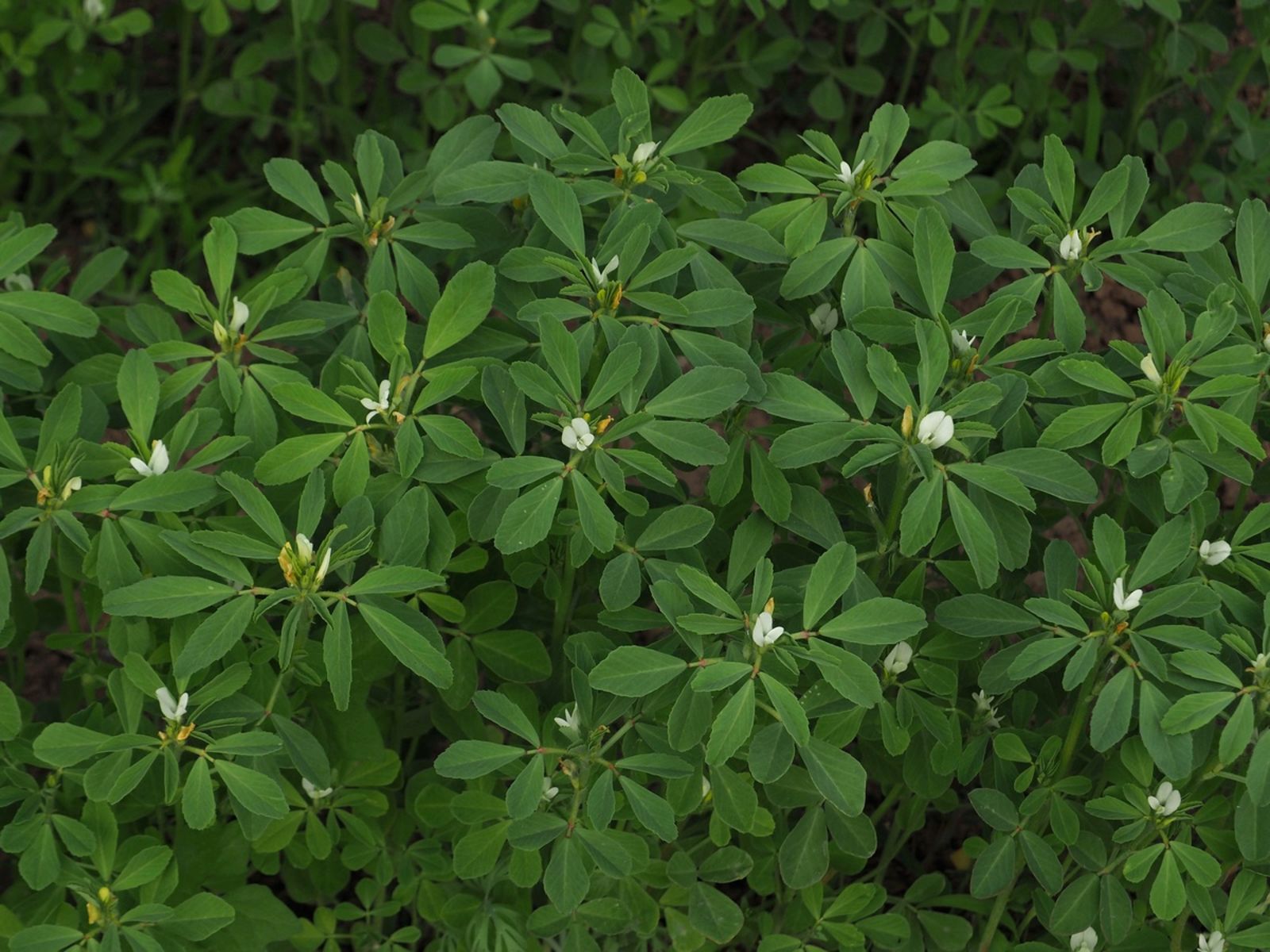Fenugreek
trigonella foenum-graecum
Also known as: ["Greek hay","bishops weed","fenigreek"]
Overview
An annual herb in the Fabaceae family, cultivated for its aromatic seeds and leaves used in culinary and medicinal applications.
Benefits & Perks
["edible fruits","medicinal use","culinary herb"]
Botanical Classification
| Phylum: | Magnoliophyta |
| Class: | Magnoliopsida |
| Order: | Fabales |
| Family: | Fabaceae |
| Genus: | Trigonella |
| Botanical Name: | Trigonella foenum-graecum |
Plant Characteristics
Basic Information
- Category: Herbs & Weeds
- Suitable Location: outdoor garden bed in temperate climates, or container in cooler regions
- Suitable For:
- Is Weed: No
- Allergenicity: low
Environmental Needs
- Climate: {"temperatureRange":"10–30°C"}
- Hardiness: {"zones":"8–11"}
- Misting: rarely required, only if ambient humidity is very low
- Drainage: Fast-draining to prevent waterlogging.
- Soil Type: Well-draining, loamy soil with added organic matter.
Maintenance Level
- Maintenance Level: moderate
- Toughness Level: moderate
- Pruning Frequency: As needed, typically during active growth or after harvesting leaves.
- Pruning Intensity: Light pruning only.
Care Details
Ideal Sunlight Coverage:
Full sun (6–8 hours of direct sunlight daily). Tolerates partial shade but may produce fewer leaves.
Sunlight Tolerance Tips:
Acclimate seedlings gradually to direct sun to prevent scorching. In hot climates, provide afternoon shade to protect from intense heat. Indoors, place near a south-facing window.
Care Requirements
Care Difficulty
easyeasy
Sunlight
full sun to partial shade
Rotate plants for even growth; use sheer curtains to diffuse intense light; monitor for leaf burn in high heat.
Watering
every 3–5 days during active growth, reduce in winter
Avoid waterlogging to prevent root rot; ensure soil dries slightly between waterings; adjust frequency based on weather and growth stage.
Soil
well-draining, loamy soil with moderate organic content
pH: Slightly acidic to neutral (pH 6.0–7.0).
Avoid heavy clay soils; ensure consistent moisture without saturation; enrich with compost annually.
Temperature
Prefers warm conditions (65–85°F or 18–29°C). Tolerates mild frosts but grows best in moderate warmth.
Protect from frost; avoid sudden temperature swings; ensure good air circulation in hot weather.
Fertilizing
every 4–6 weeks during growing season with balanced fertilizer
Apply fertilizer after watering to prevent root burn; stop feeding before flowering for better seed production; use organic options like compost tea.
Propagation
Methods
Seeds are the primary method. Stem cuttings are less common but possible for some varieties.
Step-by-Step Propagation Guide
- Sow seeds 1/4 inch deep.
- Keep soil moist.
- Thin seedlings to 6–8 inches apart.
- Transplant when 3–4 inches tall.
Best Time: Spring or early summer when temperatures are warm and stable.
Environment
Warm (70–75°F or 21–24°C), humid, and bright but indirect light. Protect from drafts.
Medium
Well-draining seed starting mix or a blend of peat and perlite.
Hormone
Not typically required for seeds; rooting hormone may help for stem cuttings.
Timeline
Seeds germinate in 7–14 days. Plants reach maturity in 40–60 days.
Tools Needed
Seed trays, potting mix, watering can, labels, grow lights (optional).
Quick Tips
Sow seeds in clusters and thin later; use bottom heat for faster germination; harden off seedlings before transplanting.
Pruning & Repotting
Pruning Guide
Method
Snip leaves or stems close to the base with clean cuts to avoid damage.
Pruning Plan
Minimal pruning needed. Remove dead or yellowing leaves to improve air circulation and appearance.
Tools
Sharp scissors or pruning shears.
Checklist
Use clean tools; prune dead or damaged parts; avoid over-pruning; sanitize tools after use.
Repotting Guide
Best Season
Spring, before the active growing season begins.
Pot Size
One size up (e.g., from 4-inch to 6-inch pot).
Method
Gently remove the plant, trim any circling roots, place in a slightly larger pot with fresh soil, and water lightly.
Suggestions
Repot only if the plant becomes root-bound or outgrows its container. Generally, annual repotting is unnecessary.
Checklist
Choose a clean pot; use fresh soil; handle roots gently; water after repotting; place in a stable location.
Advanced Care Tips
Watering Mastery
Watering Checklist
Check soil moisture before watering; water early in the day; ensure proper drainage; adjust for weather conditions.
How to Apply Water Properly
Water at the base of the plant, ensuring even saturation of the root zone. Allow excess water to drain freely to prevent waterlogging. Water in the morning to reduce evaporation and fungal risk.
Watering Schedule Tips
Water lightly during germination, then maintain consistent moisture for seedlings. Once established, water deeply once the top inch of soil is dry, reducing frequency during cooler months or dormancy.
Soil Improvement
Add compost or well-rotted manure for fertility; mix in perlite or sand for drainage; ensure aeration with organic matter.
Temperature Stress Management
Signs of Temperature Issues
Yellowing leaves or stunted growth in cold stress; wilting or leaf drop in excessive heat.
Cold Stress
Low temperatures slow growth and may cause leaf discoloration or dieback. Prolonged cold can lead to plant death.
Solution: Move potted plants indoors or to a protected location; use row covers for garden plants; avoid overwatering in cold conditions.
Hot Stress
Excessive heat can cause wilting, leaf scorch, or premature flowering. May reduce leaf yield.
Solution: Provide shade during peak heat; increase watering frequency; use mulch to retain soil moisture.
Fertilizing Guide
Fertilizing Checklist
Use diluted fertilizer; apply during active growth; avoid over-fertilization; cease in dormancy.
Fertilizing Method
Use a balanced, water-soluble fertilizer diluted to half strength every 4–6 weeks during the growing season. Avoid fertilizing in winter or when dormant.
Common Problems & Solutions
Toxicity Warning
Cats
Slightly ToxicFenugreek poses a slight risk of toxicity to cats when consumed in large quantities. The plant's active compounds can lead to mild gastrointestinal upset and other adverse effects.
⚠️ Symptoms:
🌿 Toxic Parts:
⚡ Toxic If:
if eaten in large quantities
Dogs
Slightly ToxicFenugreek can be slightly toxic to dogs if ingested in large amounts. The plant's compounds may disrupt digestive processes and cause mild systemic effects.
⚠️ Symptoms:
🌿 Toxic Parts:
⚡ Toxic If:
if eaten in large quantities
Humans
Slightly ToxicTrigonella foenum-graecum, commonly known as fenugreek, can cause mild toxicity when consumed in excessive amounts. It contains compounds like trigonelline and coumarin, which may lead to gastrointestinal discomfort and hormonal effects.
⚠️ Symptoms:
🌿 Toxic Parts:
⚡ Toxic If:
if eaten in large quantities
Frequently Asked Questions
Q: Is fenugreek safe for human consumption?
A: Yes, fenugreek is non-toxic and widely used in culinary and medicinal applications.
Q: How do I grow fenugreek?
A: Fenugreek thrives in well-drained soil and full sun, with moderate watering.
Q: Can fenugreek be grown indoors?
A: Fenugreek can be grown indoors with sufficient sunlight or artificial light.
Quick Reference
| Family: | Fabaceae |
| Care: | easy |
| Light: | full sun to partial shade |
| Water: | every 3–5 days during active |
Get Expert Care Tips
Download the Plantious app for personalized care reminders and plant identification!
Google Play App Store








